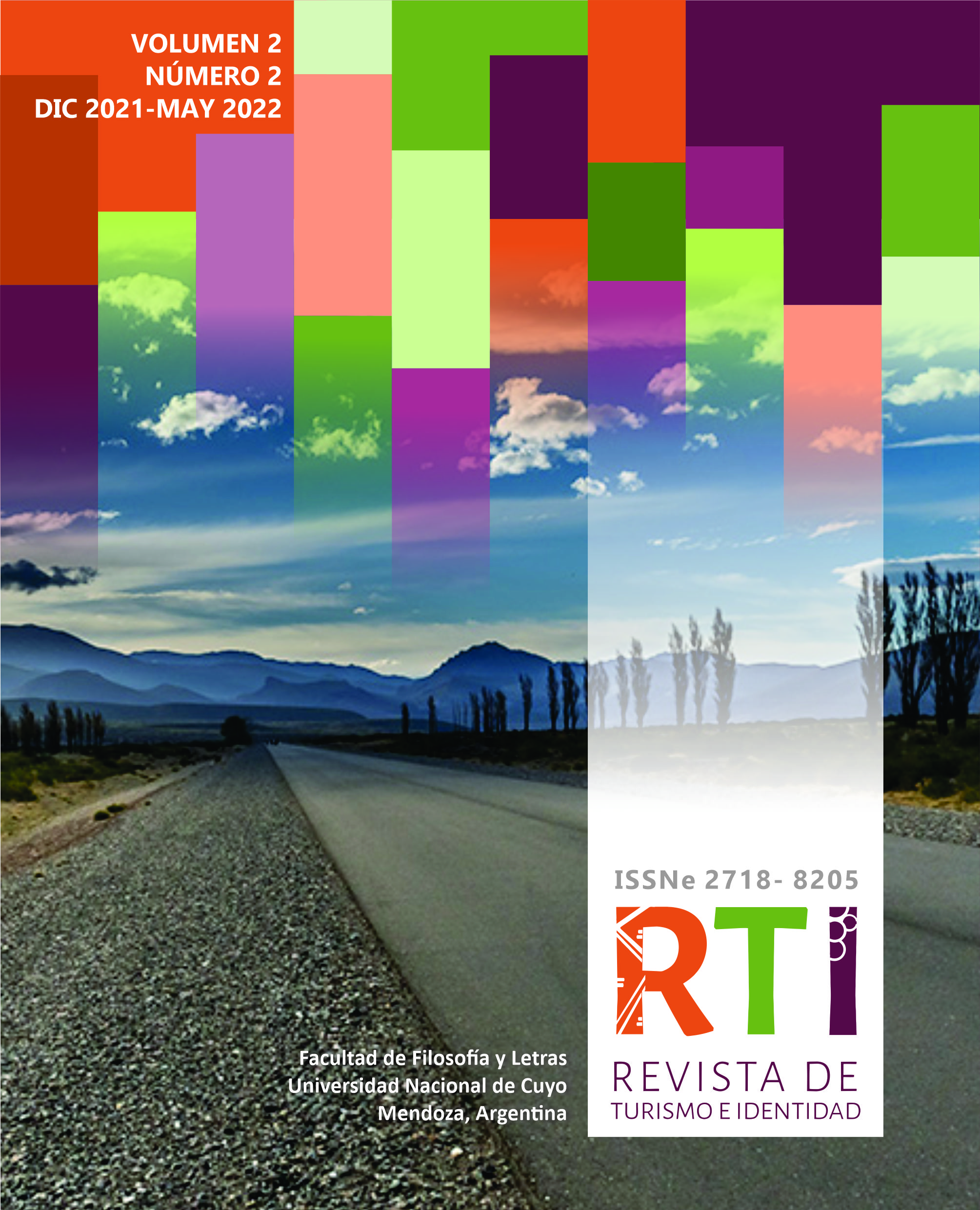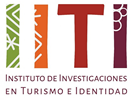Creative tourism: foundations and developing possibilities in Argentina
Keywords:
creative tourism, cultural tourism, cultural heritage, experience designAbstract
Creative tourism is a modality within cultural tourism that is characterized by an offer based on learning experiences around recreational activities inspired in the local culture and its diverse manifestations. In this article whose methodology was based on bibliographic research, the theoretical foundations of this model of tourism development are addressed, as well as the essential differences between creative tourism and cultural tourismin its most conventional expression. Likewise, the strengths and weaknesses present in Argentina for the development of this modality are analyzed, together with the challenges and opportunities that the current context contains. Cultural heritage plays a fundamental role as a source of inspiration for the creation of creative tourism proposals and therefore some examples of potential representative cultural resources from the different regions of the country are included. On the other hand, basic guidelines are addressed for the planning, management and promotion of tourism products based on the experience design. Finally, it comes to the conclusion that creative tourism represents an interesting alternative to diversify Argentina's tourism offer, according to the needs of today's tourists.
References
Araújo Pereira, G. y de Sevilha Gosling, M. (2017). Los viajeros y sus motivaciones: un estudio exploratorio sobre quienes aman viajar. Estudios y Perspectivas en Turismo, 26 (1), pp. 62-85. Recuperado de: https://dialnet.unirioja.es/servlet/articulo?codigo=6324197
Barrado, D. y Calabuig, J. (2001). Geografía Mundial del Turismo. Madrid, España: Síntesis.
Benavente J. y Grazzi M. (2017). Políticas públicas para la creatividad y la innovación: impulsando la economía naranja en América Latina y el Caribe. Washington D.C.: BID.
Binkhorst, E. (2008). Turismo de co-creación, valor añadido en escenarios turísticos. Revista de Investigación en Turismo. 1 (1), pp. 40 -51. Recuperado de: https://revistes.ub.edu/index.php/ara/article/view/18968
Carrillo García, M.; Enríquez Rocha, P. y Meléndez Herrada, A. (2017). Gestión comunitaria y potencial del aviturismo en el Centro de Ecoturismo Sustentable El Madresal, Chiapas, México. El Periplo Sustentable, (33), pp. 564-604. Recuperado de: https://rperiplo.uaemex.mx/ article/view/ 4867
Castro Analuiza, J.; Palacios Pérez, J. y Plazarte Alomoto, L. (2020). Imagen del destino desde la perspectiva del turista. Turismo y Sociedad, 26, pp. 45-66. Recuperado de: https://revistas.uexternado.edu.co/index.php/tursoc/ article / view/6265
Coscia, J. y Hamawi, R. (2014). Atlas Cultural de la Argentina. Buenos Aires: Secretaría de Cultura de la Presidencia de la Nación. Dirección Nacional de Industrias Culturales.
Carballo Fuentes, R.; Moreno Gil, S.; González, C. y Brent Ritchie, J. (2015). La creación y promoción de experiencias en un destino turístico: Un análisis de la investigación y necesidades de actuación. Cuadernos de Turismo. 35, pp. 71-94. Recuperado de: https://doi.org/10.6018/turismo.35.221511
Díaz Zarco, V. y Castro Morales, F. (2017). El turismo emocional creativo: La ciudad como taller inclusivo. International Journal of Scientific Management and Tourism, 3(1), pp.357-371.Recuperado de: https://dialnet.unirioja.es/servlet/articulo?codigo=5975093
Diez, V. 2019. El modelo de ciclo de vida de los destinos turísticos: Vigencia, críticas y adaptaciones al Modelo Butler. Revista Realidad, Tendencias y Desafíos en Turismo (CONDET), 17 (1), pp.19-34. Recuperado de: http://170.210.83.53/htdoc/revele/index.php/condet/article/view/2294/58943
Domínguez de Nakayama, L. (1994). Relevamiento Turístico: Propuesta Metodológica para el estudio de una unidad territorial. Santa Fe: Centro de Estudios Turísticos.
Florida, R. y Goodnight, J. (2005). Managing for Creativity. Harvard Business Review. Recuperado de: https://hbr.org/2005/07/managing-for-creativity
Florida, R. (2009). Las ciudades creativas. Barcelona, España: Paidós.
García Suárez, J. y Pulido Fernández, J. (2015). Creacity, una propuesta de índice para medir la creatividad turística: Aplicación en tres destinos urbano- culturales españoles. Revista de Estudios Regionales, 103, 2, pp. 69-108. Recuperado de: https://www.redalyc.org/pdf/755/7554288 2003.pdf
Goleman, D.; Kaufman, P.; y Ray M. (2012). El espíritu creativo. Buenos Aires: Zeta.
Kotler, P.; Gertner D.; Rein I. y Haider D. (2007). Marketing Internacional de lugares y destinos: Estrategias para la atracción de clientes y negocios en Latinoamérica. México: Pearson México.
Korstanje, M. E. (2015). Un análisis crítico del turismo creativo. Gran Tour: Revista de Investigaciones Turísticas. 12, pp. 23-41. Recuperado de: https://eutm.es/grantour/index.php/grantour/article/view/78/47
Landry C. (2008). The creativity city: a toolkit for urban innovators. Londres: Earthscan.
Molina, S. (2016). Turismo Creativo. Turismo, Estudos & Práticas. 6. Recuperado de: https://www.seer.ufal.br/index.php/ritur/article/view/2349
Monreal, C. (2000). ¿Qué es la creatividad? Madrid: Editorial Biblioteca Nueva.
MúsicoGuía (Ed.). (2020). Conference Proceedings CIVAE 2020. Madrid, España: MúsicoGuía.
Nizaiá Cassián, Y. (2012). De qué está hecha una ciudad creativa: Una propuesta para abordar la cultura, el ocio y la creatividad en la urbe contemporánea. Athenea Digital, 12 (1). pp. 169-190. Recuperado de: https://atheneadigital.net/article/view/v12-n1-cassian
Richards, G. (2003). Turismo Creativo: ¿Una nueva estrategia? Investigación y Estrategias Turísticas. Madrid: Thomson, pp. 107-122. Recuperado de: https://www.academia.edu/1887626/Turismo_creativo_Una_nueva_direcci%C3%B3n_estrat%C3%A9gica
Rodhes, M. (1961). An analysis of creativity. Phi Delta Kappan. 42, pp. 305-310. Recuperado de: https://www.jstor.org/stable/20342603
Sánchez Bobadilla, F. y Galeano Bate, S. (2018). La artesanía y su relación con el turismo. Revista Cientı́fica OMNES de la Universidad Columbia Del Paraguay, 1 (2). Recuperado de: https://www.columbia.edu.py/ investigacion/ojs3/index.php/OMNESUCPY/article/view/15/9
Servicio Nacional de Turismo (2017). Manual de Diseño de Experiencias Turísticas. Santiago de Chile: SERNATUR.
Soltero Mariscal, D. y Vargas Hernández, J. (2017). Modelos actuales de economías colaborativas: Airbnb, cambiando la industria de la hospitalidad. Revista Lex Social, 7 (2), pp. 349-363. Recuperado de: https://www.upo.es/revistas/index.php/lex_social/article/view/2733/2192
Tatarkiewicz, W. (2010). Historia de Seis Ideas: Arte, belleza, forma, creatividad, mímesis y experiencia estética. Madrid: Tecnos – Alianza.
UNESCO (2004). Red de Ciudades Creativas. Recuperado de: https://es.unesco.org/creative-cities/content/acerca-de
Downloads
Published
How to Cite
Issue
Section
License

This work is licensed under a Creative Commons Attribution-NonCommercial-ShareAlike 4.0 International License.
Quienes envíen trabajos a la Revista de Turismo e Identidad, que edita el Instituto de Investigaciones en Turismo e Identidad (IITI) de la Facultad de Filosofía y Letras de la Universidad Nacional de Cuyo (Mendoza, Argentina), otorgan automáticamente licencia no exclusiva y sin límite temporal de su manuscrito a dicha publicación. En consecuencia, como la distribución de la citada Revista no tiene finalidad lucrativa sino académica, el autor (los autores) autoriza(n) a la misma la difusión gratuita en formato impreso y medios electrónicos, tanto en red local como por vía internet.
Se establece que:
- Los/as autores/as conservarán sus derechos de autor y garantizarán a la revista el derecho de primera publicación de su obra.
- Los/as autores/as deben adherir a la Licencia Creative Commons Atribución-NoComercial-CompartirIgual 4.0 Internacional, a menos que se indique lo contrario, mediante la cual el autor permite copiar, reproducir, distribuir, comunicar públicamente la obra sin propósitos comerciales, por cualquier medio o formato. También, se pueden generar nuevas obras derivadas, siempre y cuando se cite y reconozca al autor original y su primera publicación en esta revista.
- Los/as autores/as podrán adoptar otros acuerdos de licencia no exclusiva de distribución de la versión de la obra publicada (p. ej.: depositarla en un archivo telemático institucional o publicarla en un volumen monográfico) siempre que se indique la publicación inicial en esta revista.
- Se permite y recomienda a los/as autores/as difundir su obra a través de Internet (p. ej.: en archivos telemáticos institucionales o en su página web) luego de su publicación, lo cual puede producir intercambios interesantes y aumentar las citas de la obra publicada. (Véase El efecto del acceso abierto).

















